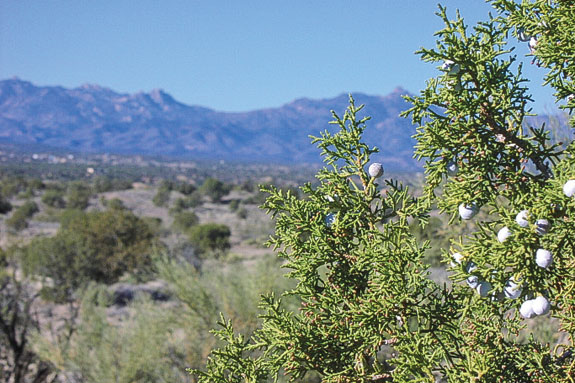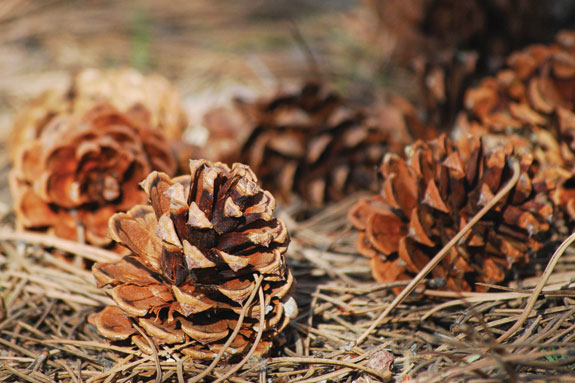Mid-summer is the time of year when the cow herd is turned out on summer pastures and most, if not all, spring calving cows are bred and in the first or second trimester of pregnancy.
Fall calving cows are increasing body condition in anticipation of calving in 60 to 90 days.Excellent forages including grass and forbs are actively growing, but so are weedy plants that can cause birth defects or abortions if consumed during critical times of the gestation period.
Cattle producers need to be able to identify toxic plants and take steps to adjust management or eliminate or reduce stands of poisonous plants to prevent calf losses.
One of the common poisonous plants producers need to be aware of is locoweed. It is found on many semi-arid ranges.
Locoweed can cause major problems with horses, and it can cause several reproductive problems in cattle. Abnormal or lengthened estrous cycles and failure to conceive have been documented in cattle grazing on locoweed.
The toxin found in locoweed can also act directly on the placenta, causing abortions, fetal resorption or hydrops allantois.
Hydrops allantois, also known as water belly, is a condition where the uterus becomes greatly extended with fluid, which may result in abortion.
The effects of locoweed on the placenta are greatest during the first 90 days of pregnancy, but can occur any time during the gestation period.
Cattle are most likely to eat locoweed when grazing pressure is high and other desirable forages have already been consumed.
However, cattle will voluntarily consume locoweed during the flower and early seed pod stage when the protein and carbohydrate levels are at their highest levels in the plant.

Problems typically occur after cattle have been grazing on locoweed-infested areas for several weeks; therefore proper grazing and pasture or range management can prevent reproductive losses from occurring.
Lupine is a beautiful but deadly toxic plant that should be of concern for producers. Lupine usually starts growing on the foothills and mountain ranges in the early spring and flowers in June.
Younger plants can be more toxic than older plants, but when lupine is in the seed stage during the late summer, it is especially dangerous because of the alkaloid content of the seeds and the enhanced palatability.
When cows graze lupine during early gestation, between 40 to 100 days of pregnancy, they can give birth to calves with cleft palates, crooked legs and malformed spines.
Severely affected calves may need to be euthanized. There are many species of lupine, but six are known to cause “crooked calf disease.”
These are silky lupine, tailcup lupine, velvet lupine, silvery, lunara lupine and yellow lupine.
The amount of lupine needed for toxicity to develop varies between animals, depending on sensitivity to the plant and stage of plant growth.
Cattle may be poisoned with .05 to 1.0 kg (0.1 to 2.2 pounds), while smaller amounts may be harmful if cattle are exposed over a period of days.
Signs of lupine poisoning can be nervousness, excessive salivation, twitching, lethargy, convulsions, coma or death.
Reducing lupine poisoning is vital to herd health. Losses can be reduced or eliminated by keeping hungry cattle away from lupine patches, providing supplements and keeping early-gestation cattle away from lupine plants.
Poison hemlock is another weed of concern for cattle producers. It is most commonly associated with sudden death in livestock or humans who have consumed the plant.
It is found growing in moist areas and can be identified by fern-like leaves, white umbrella-like flowers and purple spots on hollow stems. It is a prolific seed producer and will dominate an area if not controlled.
Cattle will typically not eat poison hemlock because of its strong odor, but will eat it if desirable forages have already been consumed or it is incorporated in hay.
Many livestock poisonings have occurred after the plant has been treated with herbicides. The herbicides kill the plant, but they do nothing to break down the toxins and may actually make the plant more desirable for animals to consume.
Cattle consuming a sub-lethal dose of poison hemlock early in the gestation period, between days 40 to 70, may give birth to calves with fetal deformities.
These calves appear identical to those suffering from crooked calf disease as a result of lupine consumption.
Losses can be prevented by controlling the weeds or adjusting grazing rotations to prevent animals from being on a pasture during the critical first trimester of pregnancy.
In many areas of the Pacific Northwest, ponderosa pine needle abortion is a huge concern for cow-calf operators.

Consumption of ponderosa pine needles during the last trimester of pregnancy can induce abortions.
Studies have found that pine needles contain isocupressic acid, which is the toxin that causes abortion.
When there is an abrupt change in weather conditions, such as wind, cold or snow, cattle are more likely to feed on pine needles.
Cattle that have access to slash piles, windfalls and fallen needles are highly susceptible to pine needle toxicity.
Once cattle have consumed the pine needles, abortions occur 48 hours to two weeks after ingestion. The specific dosage required to cause abortions is unknown, since cattle vary in sensitivity.
Once cows are exposed, they appear to have no other indicators except abortion; therefore preventative measures may not work.
If cattle are exposed later in gestation, calves may survive but will be frail, small and normally require an extensive amount of care.
Cattle may ingest ponderosa pine needles due to a lack of vegetation or supplemental feeds. Producers can reduce or eliminate pine needle abortions by providing adequate forages that meet the nutrient requirements of cattle.
The western juniper is also a cause of concern to cattle producers. Western junipers, like the ponderosa pine, contain isocupressic acid and agathic acid, which are abortion-causing compounds for cattle.
Western junipers are a concern when cows are in the last trimester of the gestation period. Ranchers should be cautious when grazing cattle in an area with fallen juniper or ponderosa pine needles, especially toward the end of the grazing season when desirable forages are less abundant and nutrient values decrease.
As cattle producers, it’s important to monitor your rangeland or pasture areas and identify and control toxic plants that may cause reproductive problems.
The few plants outlined in this article should be of concern to producers; however, this is not a complete list of problem weeds.
Other plants including milk vetch, broom snakeweed and false hellebore (skunk cabbage) can also cause various reproductive problems in cattle.
Taking a few minutes to scout your pasture or rangeland could save both money and time in dealing with herd health problems caused by plant toxicity. ![]()
PHOTOS
TOP: Lupine
MIDDLE: Juniper
BOTTOM: Ponderosa pine needles these are all among poisonous plants that can cause gestational damage to cows. Photos courtesy of Thinkstock.com.

Stephanie Etter and Rikki Wilson
Extension agents
University of Idaho
rikkiw@uidaho.edu
setter@uidaho.edu






